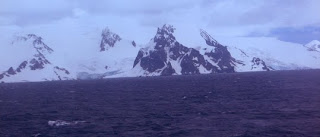We are getting used to warmer temperatures and everything else Costa Rica has to offer. The unit of currency is the colon with about 550 colons to US dollar. This results in thousands of colons for most purchases. But Costa Rica really caters to us. They accept US dollars and price many items in both. And the people, in part because they are so well educated, are warm and friendly and willing to help. It seems there are few who do not speak English as well as their native tongue.
We entered the cloud forests of Monte Verde. Verde means green so we are on the mountain of green. Indeed, it is. The canopy of the cloud forest is well over a hundred feet above us. We have as our laboratory the environment about us. Yes, we can use our instruments here but we are in fact, observing the world, far more than any closed lab room might permit.
When we come down to it, our eyes and other senses are really important. I am reminded of a dear friend, an astronomer, Albert Jones, who lives in Richmond, New Zealand. He spends every night that it is possible, under the stars. Even the Anglo-Australian Observatory in Siding Springs calls him to verify their electronic instruments against his eyes. The human eye is indeed sensitive but so are our other senses, especially when trained to be sharp.
We’ve been without internet access for a couple days, in part due travel, and in part due to connections. So I’ve got a bit to catch folks up on.
Monte Verde is a paradise of a cloud forest. It is almost always cloudy here and does not rain as much as the rain forests. Our explorations take us there and to Carera Parque, a transition forest. Carera means river of crocodiles.

They almost looked artificial to us watching from the bridge above them. Then, when they open their mouths to assist with cooling or watch them crawl forward you know they are real. And so big! It is good to see them and see just what climate does to them and other wildlife.
Atop Monte Verde we went “sky walking” which is a local term for following paths through the jungles that cross a number of very high suspension bridges. It is beautiful from up here. You can see so far when you are above the canopy in places. Nobody was really concerned about safety as the suspension cables are strong and hold us easily. Local restrictions require that no more than ten people can cross at once so Melody (our guide) and I each lead half of the group. There were five of these high bridges.
Following this we took an entirely different look at the canopy of the cloud forest. We went on zip lines. The wind was blowing, (Melody said it was officially 25 kph but it seemed higher.) We had to take a tram to the top of the mountain of green and then climb another hundred feet or so up a tower. The wind rattled through our hair and we bundled up. Yes, the wind chill was enough to need a jacket here in Costa Rica!
Then we zipped across roughly a quarter mile, more in some cases, just above the canopy. Because it was windy on some of the lines we doubled up and zipping quickly. They say top speed is about 46 mph which is a pretty good clip. My partner hung on tightly. Students managed to take some videos but I just zipped. We went on nine lines plus a practice one. It actually was fun.
 We left Monte Verde and just arrived in Quepos. The agents overbooked our rooms and so we got placed in a fantastic resort hotel for the same rate. Students cannot believe how nice it is here. Tomorrow we go to the rain forests. Comparing these different climates in one country helps to understanding climate and climate change.
We left Monte Verde and just arrived in Quepos. The agents overbooked our rooms and so we got placed in a fantastic resort hotel for the same rate. Students cannot believe how nice it is here. Tomorrow we go to the rain forests. Comparing these different climates in one country helps to understanding climate and climate change.We know the climate changes every year with the seasons but how does it act in the long term? We have paleoclimatological data from ice cores in Greenland, Lake Vostok in the Antarctic, form ocean sediments, stalagmites in caves across the globe, and recorded history. Sure, recorded history is not numerical data, but records of where grapes were grown over centuries tells us what the climate was like and helps us understand more completely.
I am lying alongside the pool as I write this blog. Dinner is in an hour and we can see the Pacific Ocean right in front of us. I hope we can catch a glimpse of the green flash. From here we can also do some astronomy work since we have access to a clear sky. We couldn’t do that with the canopy of the cloud forest overhead or the volcano outgassing around us.
We count our blessings as we look to the end of the course. A couple more lab write-ups and a final exam and we will complete our academic requirements.
There are no definitive answers to climate change. But we can better understand the processes that contribute to it. We have three more days before we begin our journey home. Thus far it has been spectacular. Together the journey has been an experience we’ll not ever forget. I will never forget these students who journeyed with me.














